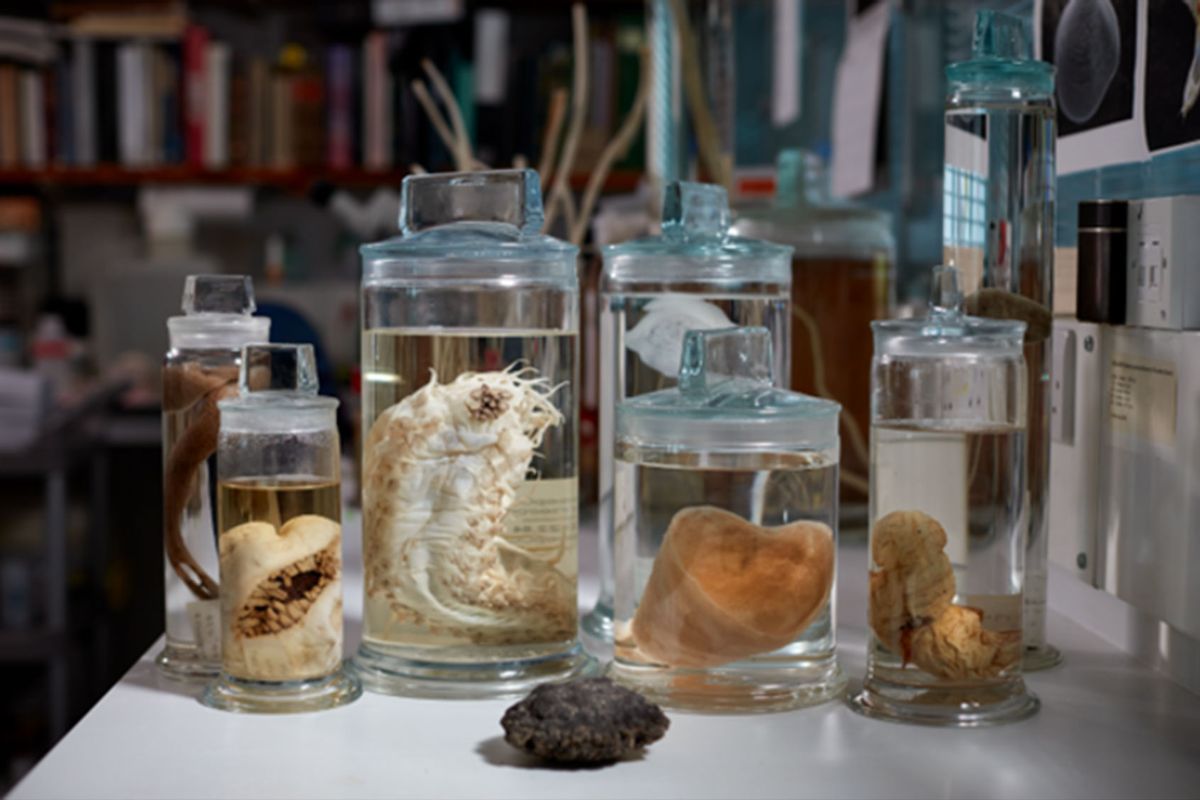Corporations are planning to mine the deep ocean where 5,000 new species were just discovered

If you were to take a boat into the middle of the Pacific Ocean, you would eventually stumble into a submarine fracture zone that is twice the size of India at roughly six million square kilometers. Known as the Clarion-Clipperton Zone (CCZ), the region is rich in minerals like cobalt and nickel and therefore immensely attractive to deep sea mining interests. Yet mining operations inevitably take a toll on nearby wildlife, and because the CCZ is so poorly understood, researchers conducting a study for the scientific journal Current Biology decided to create the first-ever “CCZ checklist” — that is, a list of all the species that inhabit this massive region.
The results? After reviewing data from all of the research expeditions performed in the region, the scientists learned that the CCZ has a total of 5,578 different species — and that between 88% and 92% of them had never before been discovered.
The scientists learned that the CCZ has a total of 5,578 different species — and that between 88% and 92% of them had never before been discovered.
The five most prevalent types of species discovered include Arthropoda (27%), a phylum that includes insects and crustaceans; Annelida (18%), a phylum that includes earthworms and leeches; Nematoda (16%), a phylum that includes human pinworm and heartworms; Echinodermata (13%), a phylum that includes starfish and sea urchins; and Porifera (7%), a phylum that includes sponges.
“We share this planet with all this amazing biodiversity, and we have a responsibility to understand it and protect it,” Muriel Rabone, a deep-sea ecologist at the Natural History Museum London, UK, said in a statement.
Regarding some of the exotic samples obtained from the CCZ, Rabone added that “there’s some just remarkable species down there. Some of the sponges look like classic bath sponges, and some look like vases. They’re just beautiful. One of my favorites is the glass sponges. They have these little spines, and under the microscope, they look like tiny chandeliers or little sculptures.”
Many other creatures are waiting to be cataloged alongside these beautiful weirdos, with an estimated species richness ranging from 6,000 to 8,000, the researchers note. However, the CCZ has already been divvied up and parceled off for major mining companies, meaning these animals are already under threat and until recently, we didn’t even know they existed. “Given mining operations may be imminent, a key consideration for the CCZ is the application of biodiversity data for environmental management, in particular assessing species extinction risk,” the authors write.
This is hardly the first report to highlight Earth’s growing biodiversity crisis. A 2022 report by a United Nations body known as the Intergovernmental Science-Policy Platform on Biodiversity and Ecosystem Services (IPBES) found that one million animal and plant species are on track to extinction. The report noted that this is a serious problem even if you are not a conservationist, since “billions of people in all regions of the world rely on and benefit from the use of wild species for food, medicine, energy, income and many other purposes.” The report added that humans’ way of life is in danger because “the sustainability of the use of wild species in the future is likely to be challenged by climate change, increasing demand and technological advances.”
Want more health and science stories in your inbox? Subscribe to Salon’s weekly newsletter The Vulgar Scientist.
A 2020 report from the World Wildlife Fund (WWF)… determined that the overall population sizes of “mammals, birds, amphibians, reptiles and fish” had plummeted by 68 percent since 1970.
“The sustainability of uses of wild species is context specific,” Dr. Marla R. Emery, co-chair of the IPBES Sustainable Use of Wild Species Assessment and a scientific advisor for the Norwegian Institute for Nature Research, told Salon by email at the time. She pointed out that life on Earth is imperiled by practices such as over-fishing, over-hunting, unsustainable agricultural development and other “economic demands,” as well as even by the presence or absence of “the systems that are in place to regulate and govern their activities.”
Similarly, a 2021 study from the journal Communications Earth & Environment that the average predicated rate of extinction for freshwater animals and plants today is three orders of magnitude higher than it was during the Cretaceous–Paleogene extinction event (K–Pg) — or the incident 66 million years ago when an asteroid or comet struck the planet and wiped out three-quarters of all the then-existing animal and plant species.
“Our results indicate that, unless substantial conservation effort is directed to freshwater ecosystems, the present extinction crisis will have a severe impact to freshwater biota for millions of years to come,” the authors explained.
This theme was reinforced by a 2020 report from the World Wildlife Fund (WWF). It determined that the overall population sizes of “mammals, birds, amphibians, reptiles and fish” had plummeted by 68 percent since 1970; that humans have been overusing the planet’s biocapacity by no less than 56 percent; and that humans have destroyed no less than 85 percent of the area of wetlands and significantly altered 75 percent of Earth’s land surface (non-ice).
Read more
about mass extinctions

